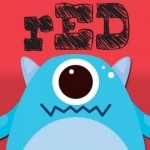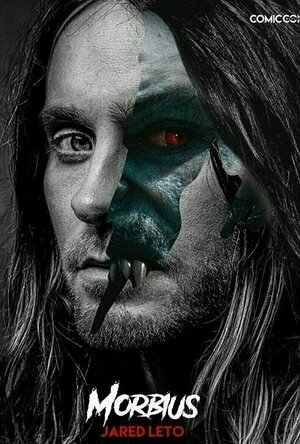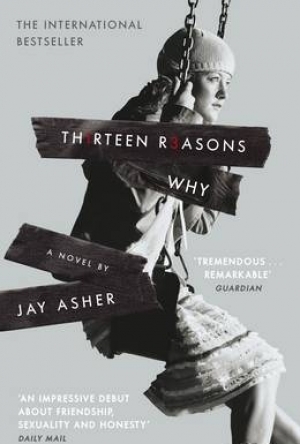
Construction Simulator 2
Games
App
Ranked #1 for the iPad & iPhone in 25 Countries In the Top Ten for the iPad & iPhone in 66 Countries...

How to Cook Everything Vegetarian
Food & Drink and Lifestyle
App
How to Cook Everything Vegetarian®, the ultimate one-stop vegetarian cookbook—from New York Times...

Kickass Commandos
Games
App Watch
Lock and Load! It's time to Kick Ass. Grab your machine-gun, flamethrower, rocket launcher and...
games

Real Racing 2
Games and Entertainment
App
Read on for important info below! **Fully enhanced for iPhone 5.** Get ready for the most...

rED Writing - Learn to Write
Education and Games
App
rED Writing has consistently been featured in the Top 10 Aussie Education Apps on the App Store for...
BankofMarquis (1832 KP) rated House of Gucci (2021) in Movies
May 14, 2022
Directed by Ridley Scott with a screenplay by Becky Johnson and Roberto Bentivegna (based on the book by Sara Gay Forden), HOUSE OF GUCCI tells the tale of the Gucci family and their fashion empire as the family sees a transition from the older generation to the new - and the outsider who stirred the pot.
This film is filled with stars - Lady Gaga, Adam Driver, Al Pacino, Jeremy Irons and Jared Leto - and is Directed by the great Ridley Scott, so why didn’t this film work?
Ultimately, films rise and fall with the script and the direction thereof, and unfortunately, both of these fall well short of good…but above bad.
Ridley Scott seemed to direct this film with the attitude of “the actors will fill out the thinness of the script, so I’ll just leave them to their own devices”, and this approach just doesn’t work.
Lady Gaga, so good in A STAR IS BORN, is just a little lost as Patricia Reggiani - the outsider (some would say Gold Digger) who digs her claws into a hapless Maurizio Gucci (Adam Driver). The first part of this film is mostly interesting as we watch Patricia manipulate Maurizio into marrying her - much to the dismay of his unapproving father, Rodolfo Gucci (Jeremy Irons, in the only characterization of this film that works from beginning to end). Driver is mostly good as the milquetoast heir who grows into a Business Mogul, but his character is mostly dealing with internal turmoil that turns into blank expressions on screen - NOT a good move for a movie.
And then the film takes a turn into burlesque with the introduction of Rodolfo’s brother and business partner, Aldo Gucci (Al Pacino) and his “idiot son”, Paolo Gucci (Jared Leto, unrecognizable under his make-up). It’s not often that you can say that Pacino is “out-over-acted” by another performer, but Leto mops the floor with him. While Pacino, actually, dials back his usual tendency to over-act, Leto goes all in on the over-acting front - so much so that one has to wonder what type of film that Leto thought he was acting in.
Ultimately, the film falls short because of a lack of focus. The movie (kind of) tries to tell the story from every characters’ point of view and in that attempt, fails, and ends up telling the story from no one’s point of view. The film starts with Gaga’s character being the entry point into the story for the viewer, but then we kareem off into Driver’s story, somewhat, and them (maybe) Pacino and Leto’s before coming back to Gaga (for a small bit) and then jumping over to Driver’s…
Well, you get the point. House of Gucci loses it’s focus along the way so you are left wishing you could get more from these characters - except for Leto’s - you wish there was a lot less.
Letter Grade: C+
5 stars (out of 10) and you can take that to the Bank(ofMarquis)
BankofMarquis (1832 KP) rated Morbius (2022) in Movies
Jul 7, 2022
Starring Jared Leto, MORBIUS follows the origin story - and first adventure - of Spiderman villain Morbius who, inexplicably, becomes the hero in this story.
While, ultimately, not a good film, there are some good things happening here, so let’s begin there.
The lead performance by Jared Leto as Dr. Michael Morbius is - very surprisingly - somewhat grounded in reality. Leto is not one to be subtle in his character choices (see HOUSE OF GUCCI) but in this one, he is (somewhat) reserved. It would have been easy for Leto to go over the top with this character, but he wisely chooses the opposite route…and it works. The always watchable Jared Harris (CHERNOBYL) is on-board in the “mentor” role while Tyrese Gibson and Al Madrigal bring some humor to the proceedings as “Agents” who are chasing after Morbius. The rest of the cast are benign - neither adding nor detracting from the proceedings - with the exception of Matt Smith (LAST NIGHT IN SOHO) who’s character is so badly written that he flounders under the weight of the absurdity of what his character is tasked with.
Trying to overcome the ridiculousness of the story is the Direction by Daniel Espinosa (the Denzel Washington action flick SAFE HOUSE). He moves the action along quickly, never really lingering on the absurdities of the events going on (and there are PLENTY of absurdities to avoid - more on that later) and Espinosa actually has an artistic vision of what he wanted to accomplish visually in this comic-book film, freezing many frames when the picture on the screen looked like a page from a graphic novel. It’s a smart choice for a film that can only be described as dumb.
And dumb this film is. I kept feeling any sense of common sense and reality slip away as this film - written by Matt Sazama and Burk Sharpless - quickly devolved into the absurd and ridiculous. One does have to suspend belief when watching Comic Book films (how else are we going to believe that a man can turn into a human spider) but in this case, the suspension is mighty - it is one of the dumbest films ever made (in terms of plot and situations) and that is saying something. The makers of this film really stretch the term “go with me here” as Morbius is constantly chasing and evolving and being chased in the most absurd ways throughout this film with special effects that add to the absurdity of the proceedings. To be fair, this film never falls into the “so bad it’s good” range, it hovers just above that line.
The end credits scenes start to setup a “Sinister Six” Spiderman film, so there is some hope for this - it would be interesting to see Leto’s Morbius team up with some other Spiderman villains (who’s names would be a spoiler), provided the script is better. There’s no way that it can be worse.
MORBIUS is not a bad film - it just will insult your intelligence.
Letter Grade: C
4 Stars (out of 10) and you can take that to the Bank(ofMarquis)
Hazel (1853 KP) rated Thirteen Reasons Why in Books
May 23, 2017
Recently filmed as a thirteen-part Netflix drama executively produced by Selena Gomez, Thirteen Reasons Why was the first novel by the award-winning author, Jay Asher. It is the type of book readers will either love or hate, but it should definitely come with a warning. This story is NOT an accurate representation of depression and suicide.
Yes, suicide. A teenaged girl has committed suicide, shocking everyone who knew her. No one could understand why, but thirteen people are going to find out. Clay Jensen is the ninth person to receive a box of thirteen audiotapes from Hannah Baker. However, Hannah died two weeks ago. As she premeditated taking her life, Hannah recorded thirteen stories involving people from her school that caused her to snowball into deep depression and despair. Desperate to find out why his name features in Hannah’s story, Clay begins listening to the tapes in order, putting together the events that led to Hannah’s death.
What follows is a heart-breaking story showing the impact individuals have on other people’s lives, often without realising it. In some cases, the characters only played a minor role in Hannah’s life, whereas others caused significant damage. The saddest thing is, Clay could have helped Hannah, but she had pushed him away.
At times, Hannah seemed like the horrible person, calling all these people out on petty little things, but these things, along with the more horrible ones, all built up to create a life that did not feel worth living. It is eye opening how much a small action, comment or rumour can so drastically alter someone’s future.
Bearing in mind that depression affects everyone differently and has numerous causes, some readers may feel disgusted at Hannah’s extreme action, but this is the fault of the author. Jay Asher fails to completely describe the emotional torment that Hannah felt, and only someone who may have been through a similar situation, or worse, will fully be able to understand the impact everything has had on her mental health.
As Hannah beleaguers her listeners, the thirteen people start to feel like the victims rather than the “attackers”, which is most probably not what the author was intending. Now, these people will have to live their lives believing they caused a girl to commit suicide when really they were only 1/13th of the reason. Although, before criticising this novel, keep in mind it is a work of fiction.
What is most painful about Thirteen Reasons Why, is not Hannah’s plight, but the reaction Clay has to hearing Hannah’s story. Unlike the other people Hannah accuses, Clay is not one of her antagonists; all Hannah wants to do is to say sorry.
It is up to the reader to judge whether Thirteen Reasons Why is worthy of praise or not. Those without an understanding of depression may dislike it on account of misunderstanding Hannah’s reasons, whereas others may feel insulted that she killed herself over things that could have been eased had she told someone. Personally, I understand where Hannah is coming from, and although I would not go to the extremes Hannah did, I do not think she was selfish or stupid or any other insult that may befall her.
The reason I give this book a good rating lies in the quality of writing. Asher seamlessly alternates between two narratives – Hannah’s story and Clay’s reaction and reflection. Although the author may not have clearly expressed Hannah’s emotions, he successful emphasises the grief and despair Clay feels listening to the cassettes. My main concern is that Thirteen Reasons Why will only be short lived. Audiotapes were already obsolete when the book was published, but soon will there be any new readers who know what a tape is?
Hazel (1853 KP) rated Thirteen Reasons Why in Books
Dec 7, 2018
Recently filmed as a thirteen-part Netflix drama executively produced by Selena Gomez, <i>Thirteen Reasons Why</i> was the first novel by the award-winning author, Jay Asher. It is the type of book readers will either love or hate, but it should definitely come with a warning. This story is NOT an accurate representation of depression and suicide.
Yes, suicide. A teenaged girl has committed suicide, shocking everyone who knew her. No one could understand why, but thirteen people are going to find out. Clay Jensen is the ninth person to receive a box of thirteen audiotapes from Hannah Baker. However, Hannah died two weeks ago. As she premeditated taking her life, Hannah recorded thirteen stories involving people from her school that caused her to snowball into deep depression and despair. Desperate to find out why his name features in Hannah’s story, Clay begins listening to the tapes in order, putting together the events that led to Hannah’s death.
What follows is a heart-breaking story showing the impact individuals have on other people’s lives, often without realising it. In some cases, the characters only played a minor role in Hannah’s life, whereas others caused significant damage. The saddest thing is, Clay could have helped Hannah, but she had pushed him away.
At times, Hannah seemed like the horrible person, calling all these people out on petty little things, but these things, along with the more horrible ones, all built up to create a life that did not feel worth living. It is eye opening how much a small action, comment or rumour can so drastically alter someone’s future.
Bearing in mind that depression affects everyone differently and has numerous causes, some readers may feel disgusted at Hannah’s extreme action, but this is the fault of the author. Jay Asher fails to completely describe the emotional torment that Hannah felt, and only someone who may have been through a similar situation, or worse, will fully be able to understand the impact everything has had on her mental health.
As Hannah beleaguers her listeners, the thirteen people start to feel like the victims rather than the “attackers”, which is most probably not what the author was intending. Now, these people will have to live their lives believing they caused a girl to commit suicide when really they were only 1/13th of the reason. Although, before criticising this novel, keep in mind it is a work of fiction.
What is most painful about <i>Thirteen Reasons Why</i>, is not Hannah’s plight, but the reaction Clay has to hearing Hannah’s story. Unlike the other people Hannah accuses, Clay is not one of her antagonists; all Hannah wants to do is to say sorry.
It is up to the reader to judge whether <i>Thirteen Reasons Why</i> is worthy of praise or not. Those without an understanding of depression may dislike it on account of misunderstanding Hannah’s reasons, whereas others may feel insulted that she killed herself over things that could have been eased had she told someone. Personally, I understand where Hannah is coming from, and although I would not go to the extremes Hannah did, I do not think she was selfish or stupid or any other insult that may befall her.
The reason I give this book a good rating lies in the quality of writing. Asher seamlessly alternates between two narratives – Hannah’s story and Clay’s reaction and reflection. Although the author may not have clearly expressed Hannah’s emotions, he successful emphasises the grief and despair Clay feels listening to the cassettes. My main concern is that <i>Thirteen Reasons Why</i> will only be short lived. Audiotapes were already obsolete when the book was published, but soon will there be any new readers who know what a tape is?
Hazel (1853 KP) rated The Storyteller in Books
Dec 7, 2018
Jodi Picoult is the bestselling author of numerous novels, with <i>My Sister’s Keeper</i> being the most well known, perhaps. All of her stories are well written although it is still possible to notice improvements in the writing over the years right up until now with her latest, <i>The Storyteller</i>, which quite possibly could be her best yet.
Arguably, <i>The Storyteller</i> does not quite read as a Jodi Picoult novel is known to. This is, in part, because of the nature of the story. Most of her previous books deal with medical ethics and/or court cases, whereas this story contains neither. <i>The Storyteller</i> contains a combination of past and present - the main focus being on the Holocaust.
Four people narrate the novel: two in the present day and two giving an account of their experience during the Second World War. It begins with Sage Singer, a 25 year old, hermit-like woman with a disfiguring facial scar – the result of a terrible accident, one that also led to the death of her mother. For the past three years Sage has been participating in a grief group – a place where people who have lost loved ones can come together and talk about their feelings. After three years surely Sage would no longer need the help of the group? However she still attends, not because she finds it helpful, but for the opposite reason. She even says herself: “If it were helpful I wouldn’t still be coming.” It unfolds that she still blames herself for her mother’s death despite the reassurances that it was an accident and not her fault.
It is through the grief group that Sage meets an elderly man, Josef Weber. After becoming friendly and discovering that Sage comes from a Jewish family, Josef confesses to something terrible – he was a Nazi during the war. He killed people. He wants Sage to represent all the Jews he killed and forgive him. Then he wants her to help him die.
Whilst, Josef recounts his experience of being part of the Nazi party, another account is also given. Minka, Sage’s grandmother, describes the terrors she faced as an imprisoned Jew suffering fates such as the deaths of all her family and friends and her time in Auschwitz. Another element to the novel is the vampire story Minka wrote as a teenager. This is interspersed between the other chapters of the book. Unwittingly, Minka’s fictional tale reflects the alienation and destruction of the Jews. The final character is Leo who, like Sage, is narrating the present day, and trying to locate ex-Nazi members in order for them to be punished by the government.
One thing to praise Picoult for, not just in <i>The Storyteller</i>, but also in all her novels is the amount of in-depth research she undertakes to make her stories as accurate as possible even though they are fictional. Minka’s account was written is such a way that it was almost believable that Picoult had been there and experienced it herself. She even learnt to bake bread so that she could write from the point of view of a baker. This is pure dedication!
<i>The Storyteller</i> is an amazing, beautiful book, which is not purely an enjoyable read. It informs, shocks and stays with you for a long time. You will question your own morals and ability to forgive. Is anyone entirely evil? Is anyone entirely good? Perhaps we are both, so why should anyone have the right to treat others as inferior from themselves?



